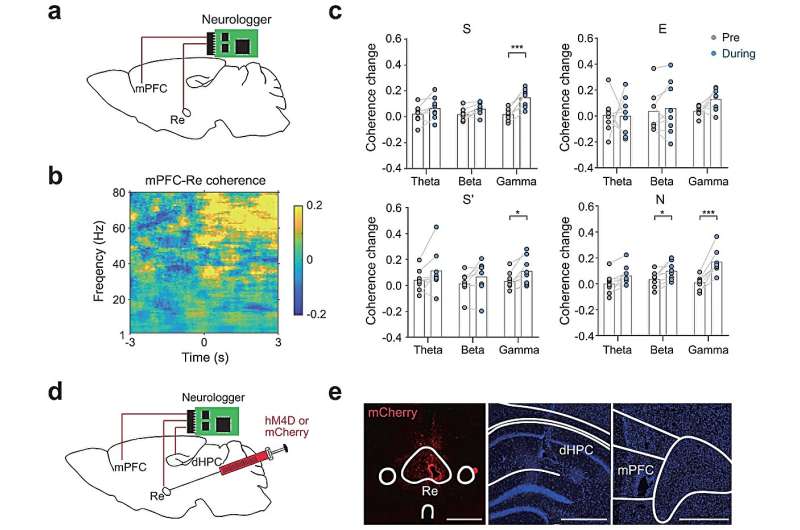This article has been reviewed according to Science X's editorial process and policies. Editors have highlighted the following attributes while ensuring the content's credibility:
fact-checked
peer-reviewed publication
trusted source
proofread
Study unveils key role of prefrontal-thalamic circuit in social recognition

The ability to distinguish between different individuals is crucial for social interactions. Previous research has shown the pivotal role of the medial prefrontal cortex (mPFC) in social processes, as evidenced by enhanced firing activity and distinct neural patterns in response to social-related stimuli. However, it remains unclear how mPFC neurons encode different social stimuli and which neural circuits are involved in processing this information.
Recently, Prof. Zhan Yang's team at the Shenzhen Institute of Advanced Technology (SIAT) of the Chinese Academy of Sciences conducted a study to investigate the role of a prefrontal-thalamic circuit in encoding social information for social recognition. The findings are published in Nature Communications.
In this study, researchers identified a specific neural circuit between the mPFC and the thalamic reuniens nucleus (Re) that encodes social information. By recording single neurons in freely moving mice, they found that neural populations in the mPFC and Re are capable of encoding information about familiar and novel identities.
During social activities, both the mPFC and Re exhibit stronger activity. Experimental results showed that pharmacological inhibition of the Re resulted in a significantly reduced ability of mPFC neurons to differentiate between social and non-social stimuli, as well as familiar and novel social objects. This indicates that the Re regulates the synchrony between the mPFC and Re, and that impaired synchrony is associated with deficits in social recognition.
By employing optogenetic techniques to selectively inhibit mPFC projections to Re neurons or Re projections to mPFC neurons, the researchers found that both manipulations led to a loss of ability in mice to distinguish between familiar and newly encountered mice. This suggests that the bidirectional projection circuit between the mPFC and Re is essential for processing social information.
Furthermore, calculating the information entropy in these two brain regions during social interactions, it was found that mPFC neurons exhibit a higher capacity for processing social information compared to Re neurons. However, pharmacological inhibition of the Re led to a decrease in the amount of information carried by mPFC neurons, indicating that effective social information processing by the mPFC relies on support from the Re.
This study demonstrates the role of the mPFC-Re circuit in social activities and offers insights for future research on the neural basis of social behavior.
More information: Zihao Chen et al, A prefrontal-thalamic circuit encodes social information for social recognition, Nature Communications (2024). DOI: 10.1038/s41467-024-45376-y





















